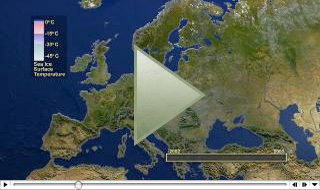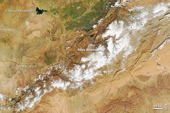
Utilizing Multiple Datasets for Snow Cover Mapping
Andrew Tait1, Dorothy Hall2, Jim Foster2, Richard Armstrong3
1 Universities Space Research Association, 7501 Forbes Blvd., Suite 206, Lanham, MD 20706.
2 NASA / Goddard Space Flight Center, Code 974, Greenbelt, MD 20771.
3 National Snow and Ice Data Center, University of Colorado, Campus Box 449, Boulder, CO 80309.
ABSTRACT
Snow cover maps generated from surface data are based on direct
measurements, however they are prone to interpolation errors where climate stations are sparsely distributed. Snow cover is clearly discernable
using optical data because of the high albedo of snow, yet the surface is
often obscured by cloud cover. Passive microwave (PM) data is unaffected by
clouds, however the snow-cover signature is significantly affected by melt water
and the microwaves may be transparent to thin snow (< 3cm). Both optical
and microwave sensors have problems discerning snow beneath forest
canopies.
This paper describes a method that combines these three snow cover
products to produce a Multiple-Dataset Snow Cover Product (MDSCP).
Comparisons with current snow-cover products show that the MDSCP draws
together the advantages of each of its component products while minimizing
their potential errors.
Improved estimates of the snow-covered area are derived through the addition
of two snow-cover classes ("thin or patchy" and "high elevation" snow cover)
and from the analysis of the climate station data within each class. The
compatibility of this method for use with Moderate Resolution Imaging
Spectroradiometer (MODIS) data, which will be available in 1999, and
with Advanced Microwave Scanning Radiometer (AMSR) data, available in
2000, is also discussed. With the assimilation of these data, the
resolution of the MSDCP would be improved both spatially and temporally
and the analysis would become completely automated.











